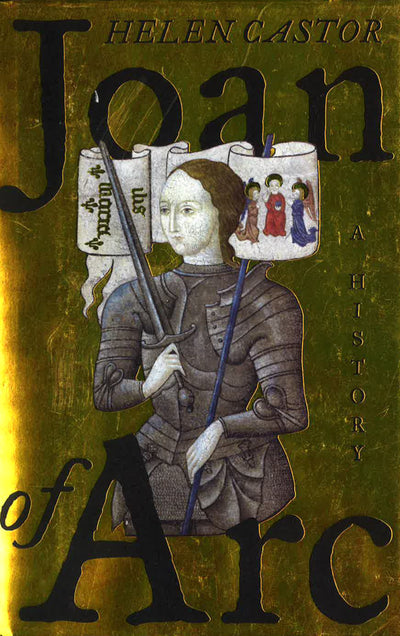
A year later, Joan was taken prisoner by the English and burned at the stake as a heretic. Soon she would lead him triumphantly through one English stronghold after another to Reims, where she would preside over his coronation as King Charles VII. Driven from her home by heavenly voices, this adolescent, illiterate girl had succeeded in persuading France’s disinherited heir, the Dauphin Charles, to believe that she had been sent by God to save France from its English yoke. This was the culmination of a miraculous four-day battle in which Joan had effortlessly lifted a six-month siege imposed on Orléans by the usurping English. Then the English turned in retreat, leaving Joan and her troops in command of the city.

For an hour the armies paused, immobile, outfacing each other in a battle of nerves. Around her, the French soldiers were eager to advance but she restrained them.

She was on horseback, in full armour, her hair shorn like a boy’s, and she was the unlikely commander of several thousand men. In Joan of Arc: A History, Helen Castor tells this gripping story afresh: forwards, not backwards, setting this extraordinary girl within her extraordinary world where no one - not Joan herself, nor the people around her, princes, bishops, soldiers or peasants - knew what would happen next.O n, a 17-year-old French peasant girl sat facing the English army north of Orléans. What could be more revealing? But all is not as simple as it seems, because this is a life told backwards, in hindsight - a story already shaped by the knowledge of what Joan would become. In the transcripts, we hear first-hand testimony from Joan, her family and her friends: a rare survival from the medieval world. One trial, in 1431, condemned her the other, twenty-five years after her death, cleared her name. Burned at the stake as a heretic at the age of just nineteen. The Maid of Orleans, and the saviour of France. A warrior leading an army to victory, in an age that believes women cannot fight. A peasant girl who hears voices from God.


 0 kommentar(er)
0 kommentar(er)
